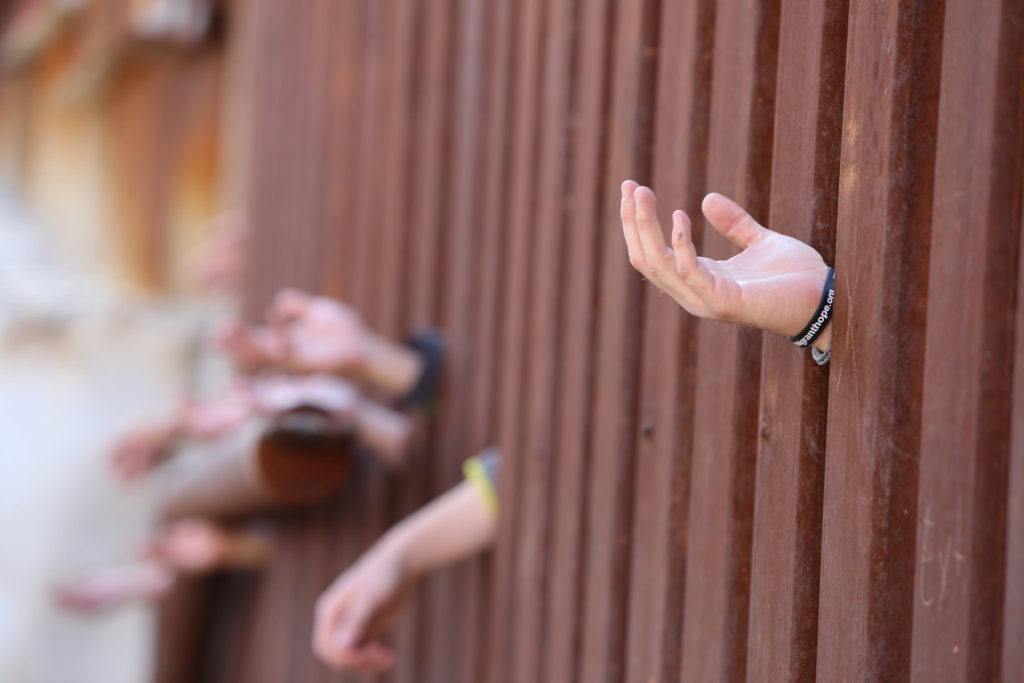The American Academy of Child and Adolescent Psychiatry’s (AACAP) flagship journal, the Journal of the American Academy of Child and Adolescent Psychiatry (JAACP), recently released an open-access compilation of articles focusing on family separation and its relationship to toxic stress and adverse childhood experiences (ACEs). The compilation comes on the heels of President Trump’s Zero-Tolerance Policy, which prosecutes all adults apprehended for crossing the border illegally, irrespective of asylum status or extenuating circumstances such as traveling with a minor.
Over 2,300 children were separated from their parents within just one month (May 5th – June 9th) of the zero-tolerance policy’s implementation. Mad in America has previously reported on studies with a similar focus, and has noted the response of various psychology groups to the policy, but the AACAP’s response takes a more tangible step than a joint public statement.
The AACAP began its engagement with the zero-tolerance policy when it released a statement in June, which reads, in part:
“As child and adolescent psychiatrists, we recognize that parental support is an essential and proven factor for protecting children and helping children recover from the negative impacts of stress and trauma. Maternal support has been shown to strengthen neuroprotective factors in the brain during childhood, when children’s brains are most vulnerable. Separating children from their families in times of stress can place children at heightened and unnecessary risk for developing potentially serious and long lasting traumatic stress reactions, at the very time when they are most in need of care and support.”

The journal Pediatrics released a similar statement in June, including links to a variety of articles from their journal that provided support for keeping parents and children together. The JAACAP then joined their colleagues at Pediatrics in creating their open-access compilation, which contains articles it has published since 2008 focusing on the impact of separation from a variety of different angles. JAACAP announced it will maintain and continue to update the compilation until the zero-tolerance policy is no longer in effect. The compilation includes eight major topics, including Separation, Epidemiology, Epigenetic, Neuroimaging/Neurological, PTSD, Treatment, Longitudinal and Review/Editorial.
The Separation section focuses on articles such as a 2018 piece from Javanbakht and colleagues entitled Mental Health in Syrian Refugee Children Resettling in the United States: War Trauma, Migration, and the Role of Parental Stress. The piece examines anxiety and PTSD risk factors in Syrian refugee children who were recently re-settled in southeast Michigan. More than half of the refugee children had a possible anxiety disorder, while three quarters of the sample showed signs of possible separation anxiety. PTSD symptoms, meanwhile, were found in over 6% of the sample, which is higher than the general prevalence in the US. The authors recommended addressing the distress within the family as a means to avoid the lifelong medical and psychiatric consequences of such disorders.
The Epidemiology section features pieces such as Maternal Early Life Experiences and Parenting: The Mediating Role of Cortisol and Executive Function. In this study, Gonzalez and colleagues investigated whether biological changes to systems such as the hypothalamic-pituitary-adrenal (HPA) axis mediate the relationship between early-life experiences of mothers and their current parenting behaviors. Results showed an indirect relationship between maternal early life experiences, conceptualized as consistency of care and childhood maltreatment, and maternal sensitivity in parenting. The relationship had two different pathways, one through HPA function and another through HPA function and spatial working memory. The authors suggest this has implications in terms of prioritizing parenting programs to relieve stress and improve executive function to provide more sensitive caregiving.
The Epigenetic section has only one piece, a 2014 article by Weder et al. called Child Abuse, Depression, and Methylation in Genes Involved with Stress, Neural Plasticity, and Brain Circuitry. The study investigated epigenetic markers as a means to predict depression in maltreated children, and found that changes in the ID3, GRIN1 and TPPP genes, in combination with maltreatment, were potentially predictive for depression in children. The genes are all relevant in stress response, neural plasticity and neural circuitry.
The Neuroimaging/Neurological section contains pieces such as McLaughlin et al.’s 2015 article, Child Maltreatment and Neural Systems Underlying Emotion Regulation. The piece investigated the association between child maltreatment and neural response during passive viewing of valenced stimuli and effortful attempts to regulate emotions. The study recruited adolescents, half of whom had experienced physical and/or sexual abuse, and found that maltreatment heightened the salience of negative emotional stimuli via amygdala, putamen and anterior insula activity. The researchers suggested that maltreated adolescents use regions of the brain involved in effortful control to an increased degree when modulating the amygdala, perhaps because greater effort is necessitated in modulating the amygdala.
In the PTSD section, articles such as Russell and colleagues’ 2017 piece The Network Structure of Posttraumatic Stress Symptoms in Children and Adolescents Exposed to Disasters are featured. The team evaluated children and adolescents exposed to Hurricanes Katrina and Gustav for PTSD symptoms, hoping to evaluate the underlying network structure of PTSD. Their results showcased how PTSD can be viewed as a malleable web of interactions between symptoms that vary across development, which has important clinical implications in that clinicians may be able to focus more directly on central symptoms that have a cascading effect on symptoms down the road.
The Treatment section focuses dominantly on the cultural adaptation of psychological trauma treatment for children, as well as investigating different contextual factors of disaster and trauma. One such factor was studied by Wolmer and colleagues, who wrote Preventing Children’s Posttraumatic Stress After Disaster with Teacher-Based Intervention: A Controlled Study. The focus of their study was whether a teacher-based preventative intervention could impact trauma symptoms in nearly 1,500 4th and 5th grade Israeli students subject to continuous rocket attacks. The results were overwhelmingly positive, as the control group showed 57% more cases of PTSD than did the intervention group, an effect that was more strongly pronounced in boys than girls.
“Encounters with stress and adversity are unavoidable and stress resistance cannot reasonably reside in the avoidance of risk experiences but, rather, in successful engagement with and mastery of them,” wrote the researchers. “However, even mild stressful events may increase vulnerability to the effects of subsequent stressors if they supersede the developing organism’s ability to cope with them. Therefore, the type, timing, duration, and severity of a given stressor within a given species are likely to be important factors in determining whether early experiences ultimately produce a protective or deleterious outcome.”
The Longitudinal section features a variety of topics, including a 4-year longitudinal study from Henrich and Shahar, Effects of Exposure to Rocket Attacks on Adolescent Distress and Violence: A 4-Year Longitudinal Study. Henrich and Shahar naturalistically explored how exposure to rocket attacks, anxiety, aggression, depression and violence commission were tied together. Their results differed on concurrent and longitudinal levels. Longitudinal results showed a robust effect on violence commission, moderate effects of exposure to rocket attacks on anxiety and depression and no effect on aggression. Concurrent results, meanwhile, showed that Wave 1 exposure associated with anxiety, depression, and aggression. Exposure in Wave 2 predicted violence commission in Wave 3, while exposure to terror attacks before the study were predictive of violence commission at Wave 4.
Lastly, the Review/Editorial section featured a series of more long-form prose, where contributors such as Dr. Balkozar Adam wrote on Treating Refugees from Syria and Beyond: A Moral and Professional Responsibility. Dr. Adam writes:
“The first step and the first principle of the Practice Parameter are to identify possible barriers that can stand in the way of treatment. For example, minorities and refugees alike often wait to access services, in part because they fear the ‘double discrimination’ of being a minority and a person with mental illness… As difficult as it might be for us to admit, we all have our biases. Our cultural biases and stereotypes can interfere with our ability to treat. These tend to be subconscious thoughts that creep into our actions. Don’t shy away from consulting with a colleague who is familiar with the culture or religion of the patient at hand. Awareness of cultural differences in the expression of distress will help us better understand the needs of our diverse patients.”
****
The special edition is available to the public at no cost: https://jaacap.org/toxicstress#















“As child and adolescent psychiatrists, we recognize that parental support is an essential and proven factor for protecting children and helping children recover from the negative impacts of stress and trauma.”
Are you kidding me ??? Child psychiatry kidnaps children from there parents LABELS AND DRUGS THEM… http://healthimpactnews.com/tag/medical-kidnap/
WHAT ABOUT AMERICAN KIDS ????
Lets do some Goggle searches here to see how child psychiatry “protects” children. And helping them “recover” what a joke http://www.google.com/search?q=how+many+american+children+on+psychiatric+drugs
http://www.google.com/search?q=long+term+effects+psychotropic+drugs+children
Child psychiatry is an atrocity.
Ya it sucks, lots of messy places in the world. The USA is about 5% of the worlds landmass and 5% of the worlds population. We can’t just invite in everyone in the world who doesn’t like what’s going on where they live now.
https://en.wikipedia.org/wiki/World_population
Mexico has offered temporary identification papers and jobs to migrants who register for asylum in the country…
Caravan members “Thanks but Mexico sucks so we are going to the US”
Report comment
Removed for moderation.
Report comment
Comment removed for moderation.
Report comment
MIA shadow bans.
Report comment
Comment removed for moderation.
Report comment
This article only confirmed for me that the field of psychology is an enemy, not an ally, to survivors of psychiatry. At multiple points in the article, refugees were classified as “having a disorder”, or “needing treatment”. The psychologists and shrinks cashing in on the government traumatizing people are disgusting. Psychiatrists benefit when people are harmed, it means they get more customers. They have no real reason to oppose the atrocity occuring in society. The last quote was terrifying- important words capitalized by me:
“…the first principle of the Practice Parameter are to identify possible BARRIERS that can stand in the way of TREATMENT. For example, minorities and refugees alike often wait to access SERVICES, in part because they fear the ‘double discrimination’ of being a minority and a PERSON WITH A MENTAL ILLNESS…Awareness of cultural differences in the expression of distress will help us better understand the needs of our diverse PATIENTS”.
The smugness is unbearable, starting by assuming that refugees are dumb, ignorant, inferior heathens who don’t know what they feel or need- they all need Western psychiatry of course, if they’d only cooperate!
Another quote from the “scientific” (lol) article:
“As child and adolescent psychiatrists, we listen to our PATIENTS, hear their pain, DIAGNOSE their SYMPTOMS, and treat their ILLNESSES. However, many refugees are HESITANT to seek HELP. Instead, they are quick to ATTRIBUTE their mental health issues to temporary lapses, religious tests, or spiritual penance”
Those “stupid foreigners” with their “heathen religion”! Worship the white man’s pills, don’t be so “backward”!. What a joke. Cultural competence doesn’t mean finding a custom way of steamrolling someone’s religious or cultural beliefs. It means actually respecting the way that person wants to make sense of their life.
The shrink assumes they have a disease due to reacting the way any human would in their circumstances, then assumes that wow-what a coincidence-the best solution is to PAY THE SHRINK for pills and sessions! Shrinks are racist predators. If the shrink cares so much, why doesn’t she fund a community center for the refugees, lead by them? Not much cash in that, I guess.
Report comment
Or perhaps they ought to attribute their “mental illness” to being refugees torn from their countries by violence and warfare and poverty and systemic corruption. Or is that not one of the options?
Report comment